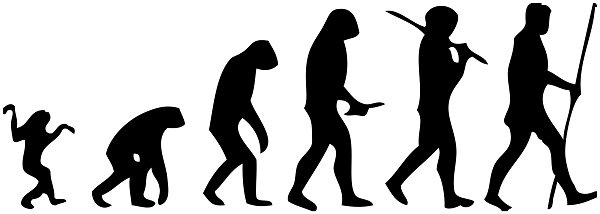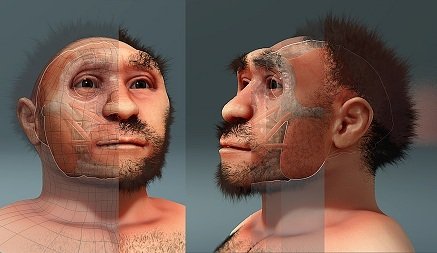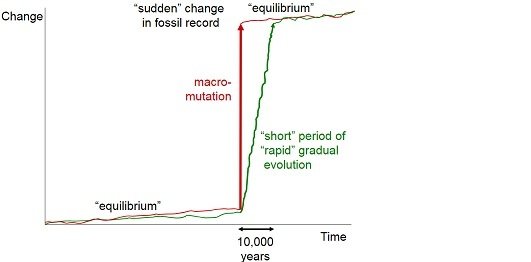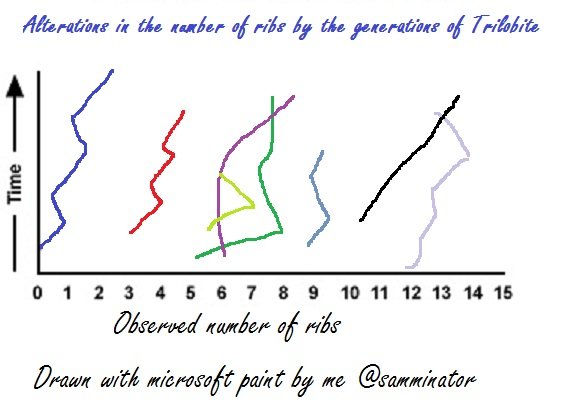Introduction
The concept of evolution is one that has been theorized from the collection of relative hypotheses drawn from the paleontological reviews of fossils. But even with the evidences drawn from these fossils, there are some gaps in the transitional fossils as it relates to the hominid species of which the modern men evolved from. These gaps are known as "missing link".

[Image Source: Wikimedia Commons]
Trail of evolution
If you are aware of the trend and pattern of evolution, you would agree with me that the complex creatures we have today (humans, for example), evolved through billions of years from simple life form; but there have been perceived transitions or gaps that are yet to be covered; hence the concept of missing link.
This idea originated from fact that it has been believed that all living things are somehow interconnected in series, which can be traced backwards to the ancestral root. The idea of missing link was indicated by Jean-Baptiste Lamarck (though very crudely), and this was even before Charles Darwin's Origin of Species. But this was expressed in one of the publications of Charles Lyell.
But as it were, the search for the perceived gap between the simple life form and humans has been age-long. For example, the quest to find the fossil that showed the transitional features between the ancient hominid species and the Homo sapiens (modern man) was almost futile until the discovery of the "Java Man" in the year 1891 (It was named Java man because it was found in Java).
After paleontological reviews from the fossils discovered, it was inferred that the creature walked uprightly (judging from the fact that the femur bone was straight and long, with a knee angle the indicated uprightness). The Java man was later named Pithecanthropus erectus (meaning; the upright man), and that is what we call the Homo erectus now. This was actually the major breakthrough in the discovery of the human evolution from the ancient hominid species.

[Image Source: Wikimedia Commons]
Ever since then, other transitional fossils have been found that has been seen to thin out these perceived gaps; just like the Homo erectus is no longer missing, and has also aided in tracing back the ancestry of modern man.
But also, there's another fact, and because none of us actually lived through evolution to trace the timeline with the highest precision index, we are heavily dependent on the information presented by fossils as indicated by paleontologists. However, the appearance of species in paleontology will normally stabilize the trend of evolution of the particular specie; this idea is called "Punctuated equilibrium" (Plural: equilibria).
Punctuated equilibria
The idea of punctuated equilibrium was theorized in 1972 by Niles Eldredge and Stephen Jay Gould, which presupposes that the development of evolution is indicated by some separated series of quick speciation for an extended period of time in which there are just minor changes or no change at all in the trend of evolution.
According to Niles Eldredge
Punctuated equilibrium describes the trend of descent occurring in "fits and starts", which is indicated by an extended period of stability. - Neil Eldredge. Source [paraphrased by me]
But at the end of the punctuated equilibrium, there is usually a short period/era of rapid growth in evolution which then leads to another punctuated equilibrium. As indicated in the image below.

[Image Source: Wikimedia Commons]
But as you may have observed, there are some areas that have not been covered by the theory of punctuated equilibrium, and that is the fact that the pattern of evolution can actually change slowly or speedily, and it can also move in reverse, as well as moving forward. Also, there could be some additional features that could be picked up by species, which are later reversed by subsequent species. Finally, this did not, as it were, cover the possibility of a "side-arm" in the evolutionary tree. For example; it has been indicated that the Neanderthal is a side-branch in the evolutionary tree of the modern man (meaning; it just died out and didn't evolve into the modern man).
Also another case of reversal of evolutionary changes is indicated in the case of the extinct group of Trilobites. It was observed that there were changes (increment, decrement, and increment) in the number of ribs possessed by the generations of Trilobites over the period of few million years.

[Image Source: Home made by me]
This has indicated that the process of evolution is a "science fact". And as a fact, it is gotten from the observation, analysis, and measurement of related hypotheses, which is indicated as "true". But this does not rule off the possibility that it can be modified in the future, or even discarded.
As it has been seen, "missing link" has implied that there is a "problem somewhere in the process of evolution. Would you possibly call this "evolution" in the presence of these much gaps? As some have argued that the process of evolution is not a sequential progress in timeline. But hey!! There are many fossils available now to lead us through this process. At least, there have been discoveries of some transitional fossils of some hominid species which can aid us in tracing, with some level of accuracy, our trend in evolution.
For example, we have Homo habilis, the Sahalantropus hadensis, the Australopithecus (A. afrensis, A. boisei, A. robustus, A africanus), Homo floresiensis, Zinjanthropus, Kenyapithecus; the list is so vast, even the newly discovered mystery specie; the Homo naledi.
Do we still need more evidences to fit into this perceived "missing link"? Well, the answer is still a "yes". This is because, if you really want the exact accurate account of evolution in precise details from the first life form, then you would need to get the fossils of every creature that had ever lived; which is practically impossible though.
Conclusion
As seen from the concept of evolution, there are perceived gaps that have been seen to have created a disjoint in the chain of evolution, which is called "missing link". But as more fossils are discovered, the gaps are gradually closing up. But even though there are still other gaps to be filled, the fossils that have been discovered should suffice to point us to the right direction.
Remember this:
No one lived through history.
Thanks for reading
References for further reading: Ref1, Ref2, Ref3, Ref4, ref5


gif by @foundation
Being A SteemStem Member
Thanks a lot bot :)
Nice one samminator
Thanks
Omg!
Did they even teach us all these during the biology class? I doubt.
I can't believe there's more to this in Evolution. Maybe because I didn't really fancy Biology back then, I wouldn't have been interested enough to further research.
This is like a new class for me. Thanks for this sire
Lol. Thanks a lot for the nice comment bro
You're welcomed sire. It's a pleasure
The human evolution really is a deep talk with it crisis along side religious believe to the origin of man. And the question most people have be asking is why this transition do not still take place in our time.
Thanks for the nice comment
Impressive post @samminator
Glad you found it impressive :)
Nice post
Help me
Please vote and flbck me
I'll think about it :p
Read this if you want to know the true story. https://www.amazon.com/Everything-You-Know-Wrong-Book/dp/0595127495
I know about the book. Thanks anyway :)